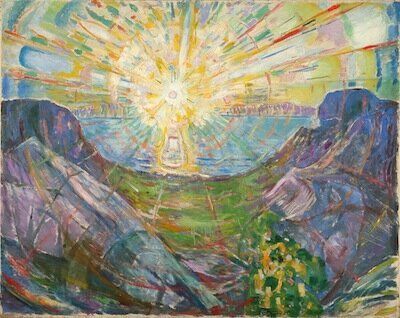The beginning of the last century, on the surface of things, was a time of pomp and ceremony; of military parades, imperial regalia, flag waving and staid order. Yet far from being symbols of stability, these represented a growing unease felt by ruling elites in a world where the existing order of things was being undermined.
Most clearly this came in the form of new technologies and scientific developments. More subtle, however, and with a much more destabilising effect, were new ideas about psychology and the nature of self. Indeed, as Philipp Blom has highlighted in The Vertigo Years, this was a time of intense change in the West. Unlike at any other time in the century, save perhaps for its end, the period offered no clear systems for thought; no neat division between one system or another; no clear route for art or ideology to develop along. Deep beneath the often placid surface, this was a time rippling with undercurrents of change.
It was into this world of external façades and the inner reality of what Freud noted was the 'primordial anguish' of civilisation, that Edvard Munch fully developed as an artist. Often associated with his bohemian youth in the 1880s and 1890s, and his most famous work, The Scream, less attention is paid to Munch's later works and his experimentation with technology.
Munch was a keen photographer and amateur film maker and his early films highlight the same childlike fascination with trams, cars and motion that we see in Paul Delvaux, for example. In paintings like 'Workers on their Way Home' we are perhaps seeing the influence of the modern lens on the painter's eye. The viewer is placed in an impossible and disorientating position as a troop of zombie-like workers - their eyes hollowed out and their mouths gaping - trudge past and almost beneath the viewer.

The Sick Child 1907
© Munch Museum/Munch-EllingsendGroup/DACS 2012
Yet the extent to which the new mediums, and modernity generally, affected Munch's work is uncertain. Certainly Munch explored the same psychological angst with both paint brush and film. Yet he suffered psychologically throughout his life - he was depressed and suffered from alcoholism. The death of his sister at a young age was to have a profound impact on him for the rest of his life and in 1908 he suffered from a mental breakdown. These had a much more profound impact on the painter than other developments.
The distortion we see in his photography, and the emotionally volatile paintings which skew space and distance, stems from this mental fragility, rather than a conscious decision to emulate the effects of the latest modern technology. The machines of modernity were not directly effecting Munch; instead Munch was doing what comes naturally - fitting technological developments into pre-existing patterns. In Munch's case this meant the continued expression of a complete inwardness.
Munch's reworkings, on display here, should consequently be seen as more than simply reproducing images, factory-like, to make a quick buck. Instead the themes and shapes develop gradually over time and are revisited - the hunched mother over her dying child blends into the image of a couple fused in a kiss; as does that of a vampire sucking the life out of its victim. These images are clearly being replayed over and over in Munch's mind. Indeed he rejected the idea of a 'picture factory' - 'there was always progress too, and they were never the same - I build on the last.'

The Sun 1910-13
© Munch Museum/Munch-EllingsendGroup/DACS 2012
There is a constant mental recapitulation with Munch to events which have, over time, altered themelves in his mind. 'The Weeping Woman' clearly highlights this, and there are several versions on display at the Tate Modern. These give us a range of almost imperceptibly altered moods despite the near identical pose of the subject. In one we seem to see Munch focused on capturing the pure form of the woman's silhouette - the body is frozen and could be on a plinth. In another flesh and blood have replaced the marble form; in another the bed has clearly been used; in another it is pristine. Throughout these we get everything from the melancholic to the seductive; the embarrassed to the malevolent. This is all uncertain - we are, after all, attempting to get inside an unstable man's mind.
It would be to undermine Munch to label him with an 'ism'. Certainly this exhibition highlights that Munch, producing most of his work in the twentieth century, was exposed to many of the underlying and often unpleasant realities of modernity. Yet he did not artistically embrace the idea of modernity in the same way that many of his contemporaries did. This is not modernity in the Henry Ford production line sense; Munch's interest in movement is not one of sound, light and speed, for example. Instead he revisits mental images, seeing what has passed in a new light, rather than simply mechanically reproducing them. Munch's is a modernity rooted in self-analysis and the exploration of the unseen.
Tate Modern: Exhibition
28 June - 14 October 2012
£14, concessions available